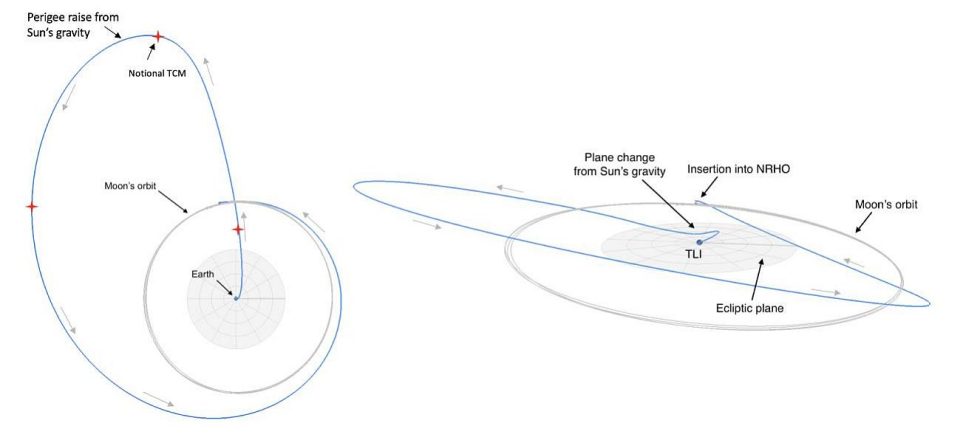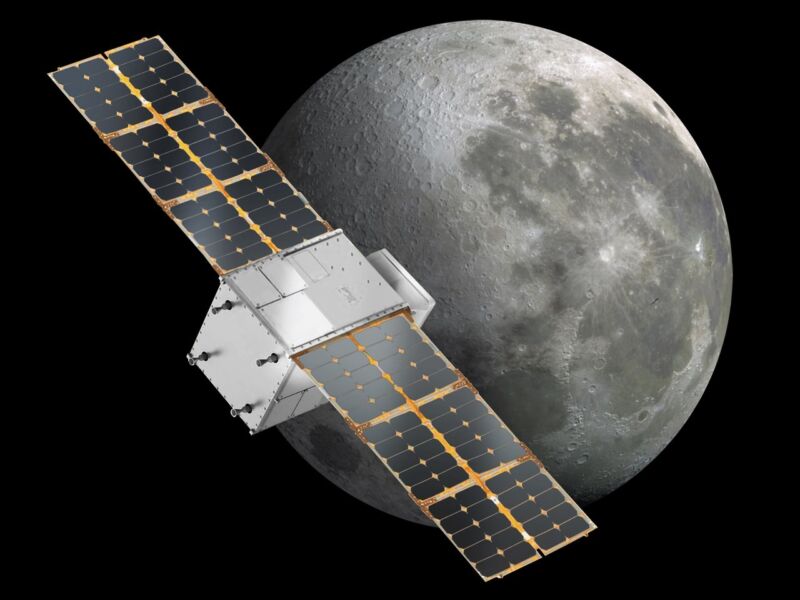"It's really pushing the envelope as a commercially owned spacecraft operating at the Moon."
NASA and Rocket Lab are gearing up to fly a novel mission to lunar orbit that in many ways serves as the vanguard of what is to come as the space agency and US companies ramp up exploration and development of the Moon.
The space agency is financially supporting the privately built satellite, named CAPSTONE, with a $13.7 million grant. It is scheduled to launch on an Electron rocket as early as Saturday from New Zealand. Developed by a Colorado-based company named Advanced Space, with help from Terran Orbital, the spacecraft itself is modestly sized, just a 12U cubesat with a mass of around 25 kg. It could fit comfortably inside a mini-refrigerator.
The mission's scientific aims are also modest—primarily, the demonstration of a new system of autonomous navigation around and near the Moon. This Cislunar Autonomous Positioning System, or CAPS, is important because there is a lack of fixed tracking assets near the Moon, especially as the cislunar environment becomes more crowded during the coming decade.
Nevertheless, NASA views this as a pivotal interplanetary mission for a number of reasons.
In an interview, a senior engineer in NASA's Space Technology Mission Directorate, Chris Baker, said the space agency is interested in this kind of technology as it makes plans to help manage growing traffic near the Moon, including its own Artemis missions and commercial spacecraft delivering NASA science payloads to the Moon's surface.
The CAPSTONE mission will also benefit NASA in another way. It will fly in a special orbit, called a near-rectilinear halo orbit, around the Moon. This is a highly elliptical orbit that periodically comes to within about 3,000 km of the Moon and travels as far away as 70,000 km. In that sense, it's a weird orbit, but because it is neatly balanced between the gravity of Earth and the Moon, the orbit is highly stable and requires only a small amount of spacecraft propellant to hold position.
Later this decade, NASA intends to start assembling a small space station, called the Lunar Gateway, in this elliptical orbit. The Gateway is intended to serve several purposes, including providing a way station for astronauts traveling down to the surface of the Moon. The CAPSTONE mission will be the first spacecraft to test out the parameters of this orbit and verify the stability of the orbit as predicted in simulations.
READ MORE
- Rocket Lab Weighs Speeding Development to Fill Gap Left by Soyuz
- Most Rocket Lab staff set to be based outside NZ by early next year
- Rocketlab reveals more details on Neutron
- Rocket Lab will attempt to catch rocket as it returns to earth using helicopter
"The mathematical models are really good," Baker said. "There's not any concern that we're going to learn anything to affect it. This is really more about refining our understanding, looking at station-keeping Delta-v to ground those models with real flight data and optimize operations."
The CAPSTONE mission is a pathfinder in other ways that could prove important as exploration of the Earth-Moon system broadens beyond traditional space agencies. It may help uncover ways to cut the costs of reaching the Moon, a significant barrier to commercial activity.

Notably, this will be the first interplanetary mission launched by a small, liquid-fueled rocket, the Electron vehicle. The launch company, Rocket Lab, has built an interplanetary third stage called Lunar Photon that will separate from the rocket about 20 minutes after liftoff. Six days later, after raising CAPSTONE's orbit to 60,000 km, the Photon stage will make a final burn and boost CAPSTONE into deep space.
Then the spacecraft will spend nearly four months traveling to the Moon, following what's known as a ballistic lunar transfer that uses the Sun's gravity to follow an expansive trajectory. While this path will bring the spacecraft to a distance of more than three times that between the Earth and Moon, it will require the small vehicle to burn relatively little propellant to reach its destination.
"One of the things that makes this mission particularly attractive to us is the capabilities it is demonstrating, and the US small businesses and commercial capabilities that it's leveraging," Baker said. "It's demonstrating access to the Moon for a small spacecraft on a small rocket. It's really pushing the envelope as a commercially owned spacecraft operating at the Moon and helping to blaze a trail that others can follow."


